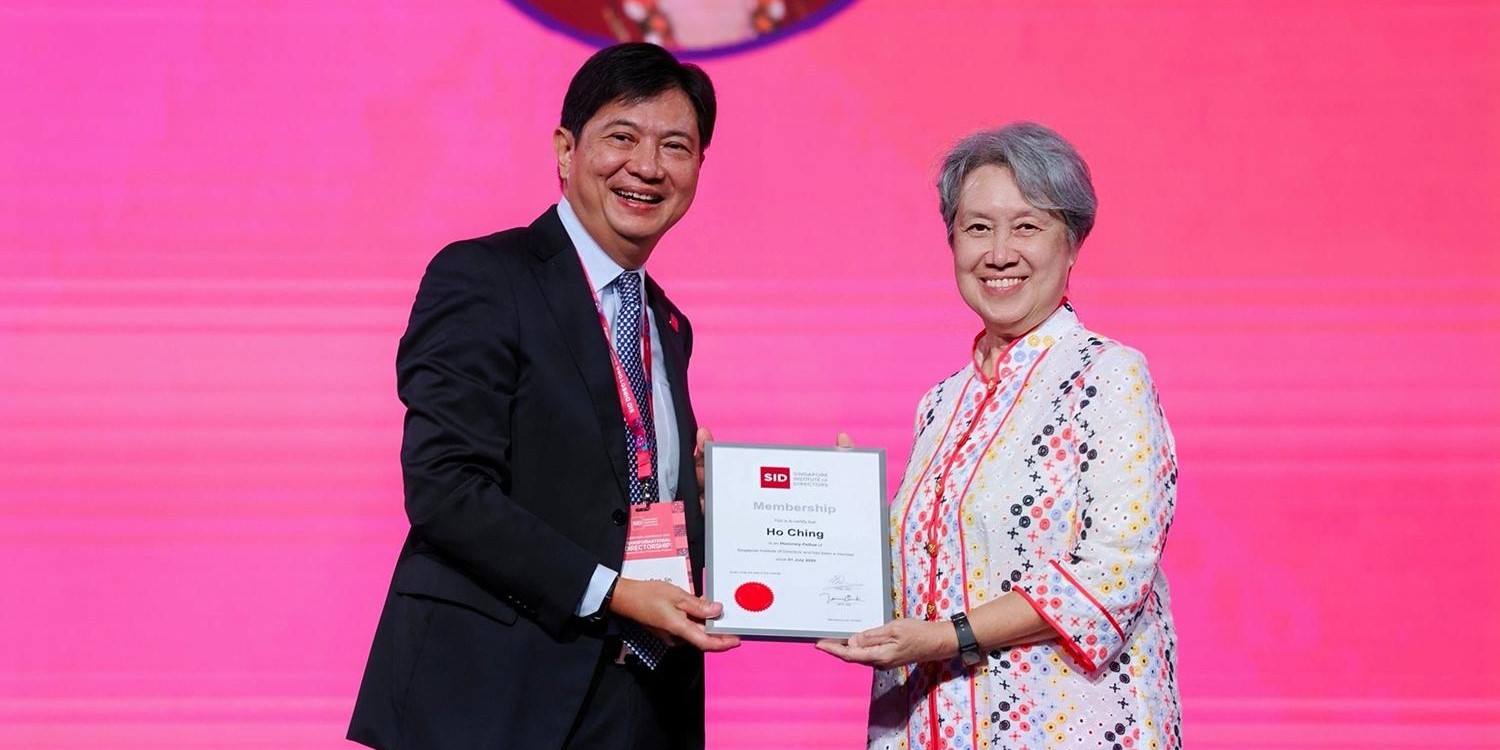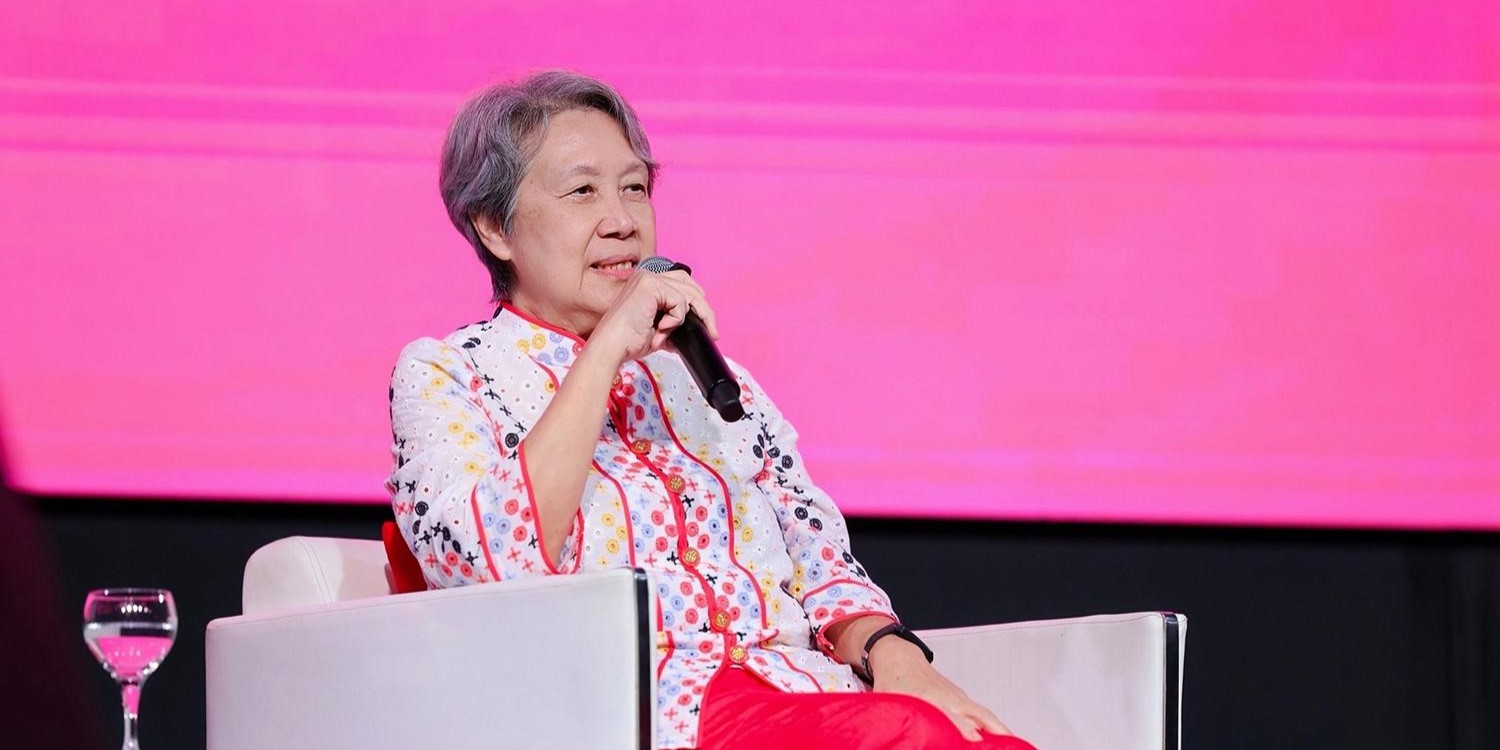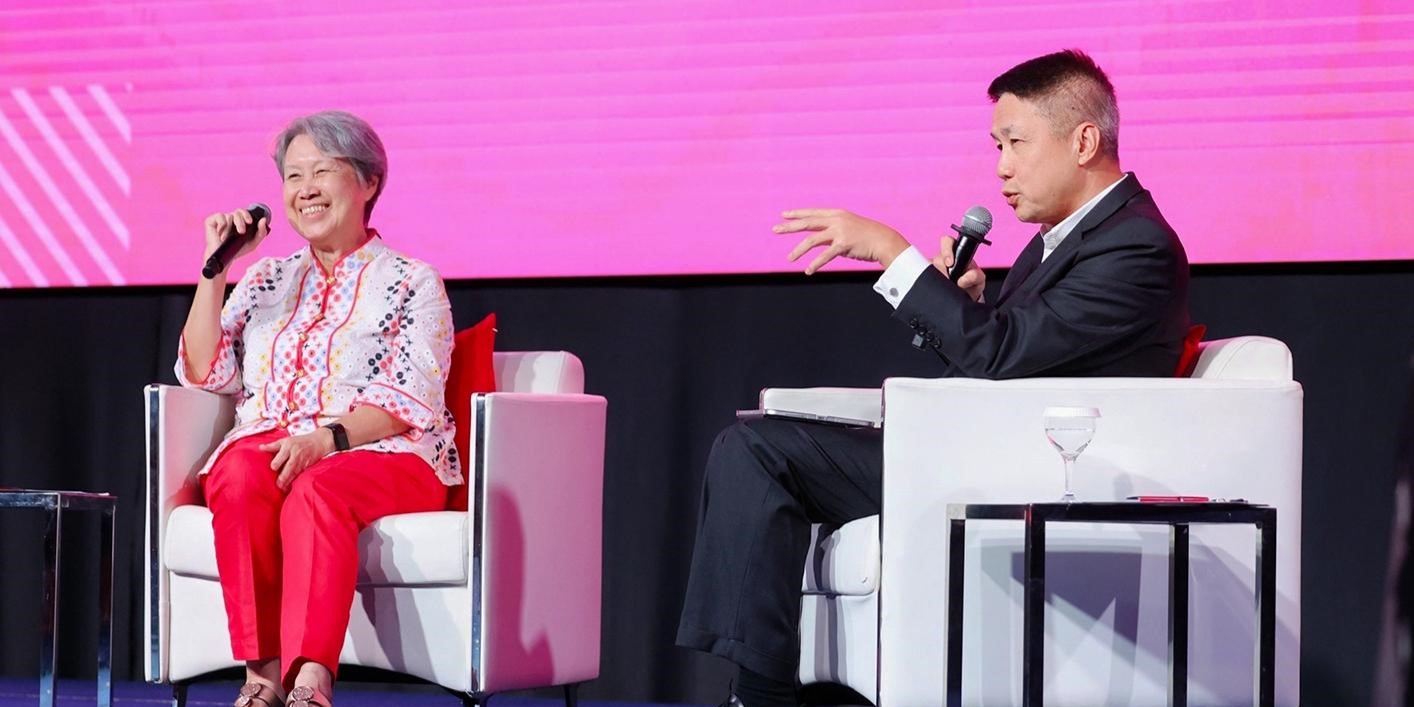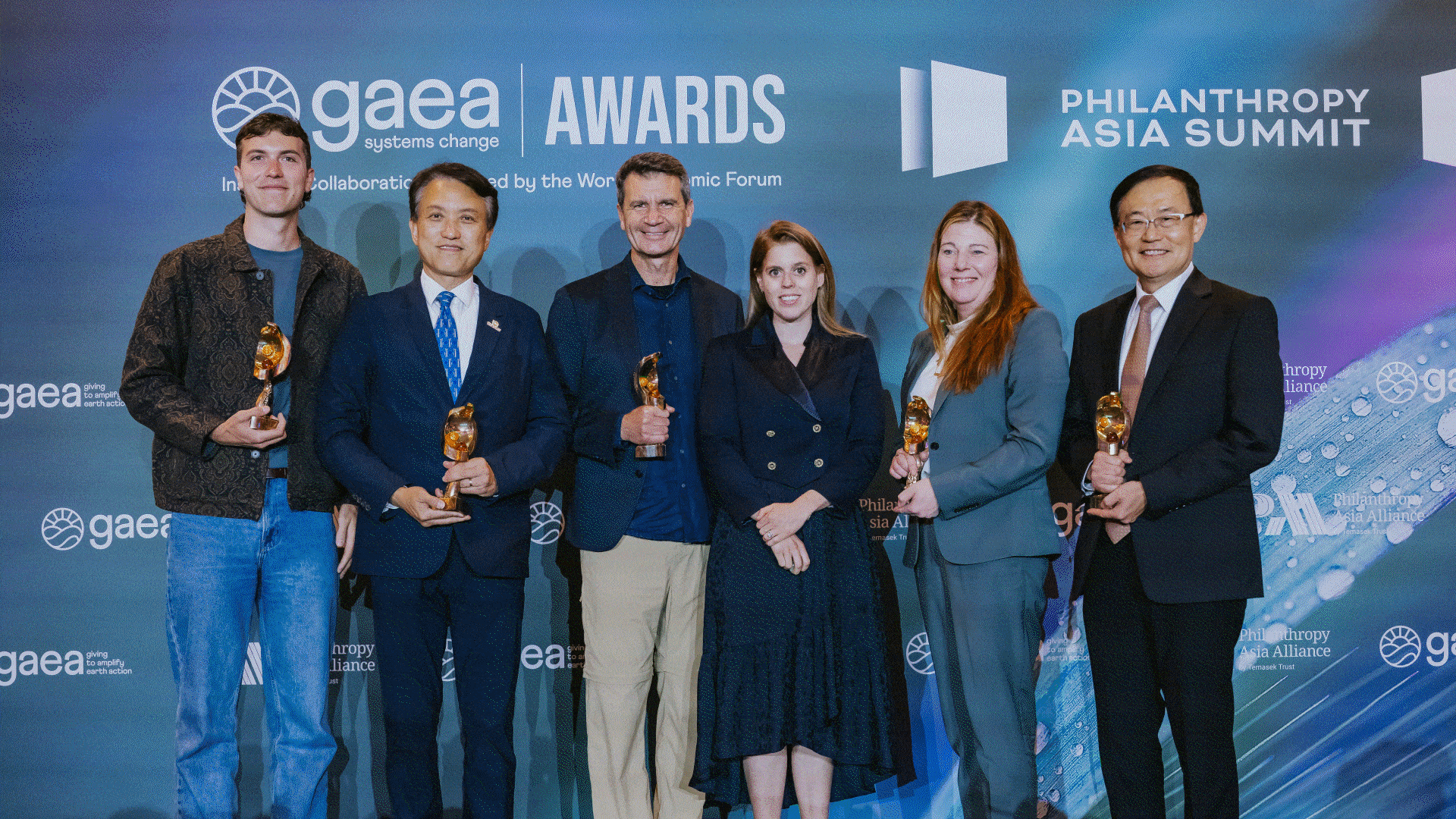Ms. Ho Ching was conferred the title of SID Honorary Fellow by the Singapore Institute of Directors (SID) at the SID Directors Conference on 12 September 2025, in recognition of her distinguished contributions to corporate governance and stewardship in Singapore.

Photo credit: Singapore Institute of Directors (SID)
At the conference, she took part in a fireside chat moderated by SID Treasurer Mr. Max Loh, sharing her reflections on how boards can lead with purpose and make a lasting impact. She emphasised that businesses exist to solve problems and serve society, and that boards must anchor their decisions in a clear sense of purpose — because purpose shapes accountability and long-term value creation.
Ms. Ho Ching also spoke about the importance of trust and complementarity between boards and management, and the need for leaders to “let go to grow” by empowering others to learn and lead. Describing boards as catalytic rather than transformational, she highlighted their role in setting risk boundaries, developing people, preparing for crises, and guiding transformation with foresight.
Drawing on the “four Ps” — Planet, People, Peace, and Progress — she urged boards to embed purpose into their organisations and contribute meaningfully to society, helping companies build resilience and create sustainable value for the long term.
She closed with a practical call to action:
"Whatever your purpose, think of institutionalising how you contribute back to society – whether it is 1 per cent or 2 per cent of your net profit. That’s number one: money and resources. Second, think about how you can enable your people to be part of that journey, because today’s employees are looking to contribute in more ways than one. Other than earning a living, they want to feel they can add to a better society."
— Ms. Ho Ching, Temasek Trust
Read the full transcript of her fireside chat below.
Nurturing an Ownership Mindset
Max Loh (ML): How can boards nurture an ownership mindset that balances periodic accountability with creating enduring value for shareholders, employees, and society at large?
Ho Ching (HC): The key in terms of the ownership mindset is to recognise the purpose of the company as a business. Businesses exist to solve problems, to provide a service, to provide a product that is in need. Businesses have a purpose in finding solutions or offering solutions to their clientele. But businesses are also members of society. That is why individuals, businesses as corporates, organisations as institutions, all have a role as members of society. Companies, boards of companies, boards of institutions, and boards of nonprofits have to ask themselves: what is their purpose? If they have clarity about their purpose, I think everything else falls in place.
I was guilty of being the first chairman who insisted on quarterly reporting when quarterly reporting was not required. That was at ST Engineering. I did it for a reason. I did it so that the management would be on top of their numbers in a timely fashion. I did not expect that Singapore would require quarterly reporting. I do not think quarterly reporting is a one-size-fits-all kind of regulation. Quarterly reporting is useful because it gives you a lead indicator of what the next season may look like, for instance, in the midyear or in the third quarter. It gives you an indication of what your fourth quarter may look like, because Christmas is coming. But if you are in a shipbuilding business, or in property development, where the development cycle is two or three years, quarterly reporting makes no sense.
When companies look at short-term reporting, they have to understand their business and the relevance of quarterly reporting to their long-term view. And if your horizon goes beyond your own standards, as a board member or as an executive — that you feel an obligation to leave something behind as part of your legacy that others can build on — then what Piyush Gupta and Chew Gek Khim mentioned (in the previous panel discussion) about looking beyond quarterly reporting becomes a natural thing, and quarterly reporting should not be the driver.
The Board-Management Relationship
ML: Thank you for that. I want to move quickly to the next theme, which is about the board and management. I know in the previous dialogue, Piyush and Gek Khim also shared their insights, but I think we really want to hear from you, because you have been a CEO, director and chairman. The relationship between boards and management is often delicate. With too much oversight comes tighter management, while too little can lead to blind spots. From your perspective, what does the sweet spot of board-management engagement look like?
HC: Number one, we have to recognise that we are all human beings, and as human beings, we have our own self-confidence and our own egos. We need to understand and manage that in a constructive way. For example, you want a CEO who has ego, because ego is the driver. But you do not want that ego to be so overpowering that he thinks of himself as an emperor. This applies to the chairman and to board members. So first, understand that we are all human beings. We have our own motivations; we have our own egos; we have our own self-confidence, or lack of self-confidence, that we try to compensate for — and be able to manage that. It is people to people.
Second, the board and management have to see themselves as complementary. They are partners. In formulating boards, or in trying to find a chairman, what we look for are the complementary skills and experiences between the chair and the CEO, but also among the board and management.
Third, and this is very important and applies to boards, chairmen, CEOs, as well as leadership up and down an organisation, is the ability to let go to grow. If you cannot let go, if you keep pulling back because you are fearful of loss of control or fearful of risk, then there is no chance for people to grow. And when you don’t have people who are learning and growing and making their own mistakes, you will get a much weaker organisation. So, this ability to let go, give space, and allow people to make mistakes, so long as that mistake is not life-threatening.
If you look at the board as an example, the board has a few functions. Key among them is to look beyond the horizon. Whether it is a new technology, or new regulations such as carbon pricing, you have to look beyond the horizon. Management is day-to-day, and when they have day-to-day functions, they may not have enough bandwidth to look beyond. Whereas boards are not caught up in the day-to-day. Boards have the flexibility to move around, to do other things, and that allows you to look beyond the horizon.
The second thing is to set the boundaries of risk. What kind of risks are you prepared to take as an institution? Not the day-to-day operational risks, which rightly belong to management, but the boundaries, the guardrails. And how do you institutionalise those guardrails?
As an example, in Temasek, one of the reasons we set out to issue bonds was not because we needed the money. We had the flexibility and the luxury of investing within the resources that we had. We wanted to put bonds out there to create a new set of stakeholders. More importantly, the bond prices, the spread, will be a very clear signal of whether something was right or wrong. We looked at it as if you care credit rating from Triple-A down to Triple-C. These are the boundaries of risk. So, the board members, the board as a whole, have to decide what kind of boundaries of risk that you want to take, and set about working with management to institutionalise the tools that allow you to track them.
The third area, which I think is critical, which many, including Professor Andrew White mentioned, as well as other, is people — people development. One of the key problems about people development is not just the health part, or the education part, but the ability for them to take risks. It is easy to say, “I’ll fall back on do-nothing, I do business-as-usual, because it’s harder to fault me.” The error of omission is very different from the error of commission. That is something that I think is very critical for the board to understand. And to ask, “How do I develop people in a strategic way that enables them to grow?” Not just the CEO, but the entire organisation. And I think if you can do that, that’s a real, real big plus for a company to transform.
And the last one, which is critical, and hopefully very few of us need to face, and that is crisis management. Sometimes a CEO fails, sometimes a business fails, sometimes a huge scandal hits the company, and that’s where the mantle of the board comes through as the crisis manager. Crisis management cannot be left to the executive. The board has to come in. I have seen cases where a chairman, one that is trusted and experienced, melted in a crisis. At the same time, somebody else on the board had the gumption, had the presence of mind, had the experience to understand what needs to be done, who stepped up and took the baton.
So, these board dynamics, when we are looking at composition of boards, it is not just about bringing different experiences, different perspectives, different age groups, different whatever, but also the ability to be there, to step in during a crisis, to face shareholders, to face regulators, to face the broader stakeholder community, and to marshal the executive team. Sometimes in such situations, you actually have to fire the CEO and to step in to marshal the rest. So, the crisis management part is a crucial, understated responsibility of the board.
The Role of the Chair
ML: Thank you. That is, I think, in a nutshell, everything that you’ve heard between the board and the management. But the chair obviously plays a very important role in shaping boardroom discussions. In your view, how can board chairs encourage candour, healthy debate, even dissent, while at the same time build alignment and drive decisive outcomes?
HC: There are different chairmen and there are different personalities. Some chairmen very outgoing, some more reticent, who don’t speak much, but when they do, they mean business. There is a whole range of personalities, but I think the trust between the chairman and the board is crucial. It requires interaction beyond board meetings, feeling free to interact in other occasions and settings.
It is also important for the chair to create an environment where dissenting views are welcome, and defending dissenting views across not just from the board, but also from the entire executive team. I think this ability to accept differences in views comes from this understanding that none of us has all the answers, and therefore we should welcome answers within the company, within the board, but also from outside the board. And I think this becomes a very healthy thing if we can do it well.

Photo credit: Singapore Institute of Directors (SID)
Transformational Directors
ML: Many directors aspire to not just be effective, but transformational, to help boards navigate disruption and uncertainty, even societal change and expectations. From your perspective, what truly defines a transformational director, and how does that differ from a director who is just competent, conventional, or collaborative?
HC: I think it is more helpful to put our ego aside and not to think of ourselves as trying to be transformational directors. You can have transformational boards. You can have transformational leadership, because transformation actually comes from execution. The board’s role is to guide, to mentor, to set the boundaries. So, I see the board more as catalytic. And if you want to be catalytic, you have to be very open. You have to maintain a certain curiosity and set yourself up to be a mentor, to try and develop a compass for the company, for both the board and the company.
In transformation, there will be a lot of uncertainty, there will be a lot of changes, and there can be a lot of turbulence. And if the transformation takes place against a backdrop of a fast-changing environment, it can be very unsettling. And therefore, I think the number one contribution that the board and board members can make is really to understand the people resource. Figure out how to help the executive team bring this home.
If you look at the four Ps (Purpose, Practice, Performance, Progress), I would like to suggest that maybe we think of it as a matrix, where you have these four Ps, and along the horizontal, let’s say, add another four Ps along the vertical. The other four Ps I like to think of is in terms of: Planet, People, Peace, and Progress.
Planet: We all know every degree of average global temperature rise means 7 per cent more water absorption in the atmosphere. We are now about one and a half degrees hotter, and there is about 10 per cent more water in the atmosphere. And that is why we get torrential rain, one month’s or three months’ worth of rain falling within a day or a few hours. That is why you have floods because your infrastructure doesn’t cater for that kind of intensity. So, on Planet, we need to drill down to numbers, what kind of carbon emissions, and therefore begin to take steps. If you don’t even look at those numbers, it is something far away.
People: The organisation is driven by people. No matter how much AI there is, there will be people. And one of the key things about people is to provide them with two hygiene factors — health and education. How do we create a system where people can live healthy lives well beyond their tenure in the company? How do we give them skills or hobbies they can take with them through their tenure in the company, as well as outside the company?
Peace: I’m not talking about peace in the form of wars, because by the time wars happen, it’s very difficult to get people to talk together. Peace, in the sense of bridging divides: the divide between the executive and the worker on the floor, between management and labour, between management, labour and government — tripartism. The ability to foster that peace within the company as well as outside it.
Progress: In terms of supporting whatever your company needs to do, in terms of delivering performance. But progress is also in two areas: capability and capacity. The capability to adapt, the capacity to deliver at scale.
And these are the things which I think, if we look at these metrics, maybe we can start thinking and planning our transition, or transformation, in a more methodical way.
Reflections
ML: Thank you for that. I know in the afternoon we have four breakout groups; we might have to expand it by another four to add on the other four Ps. All too quickly, time is up. I really wish to thank Ms Ho Ching for sharing her invaluable insights and thoughts with us.
HC: Thank you all. I want to take this opportunity to urge you to do one thing when you go back to your boards. Whatever your purpose, think of institutionalising how you contribute back to society — whether it is 1 per cent or 2 per cent of your net profit. That’s number one: money and resources.
Second, think about how you can enable your people to be part of that journey, because today’s employees are looking to contribute in more ways than one. Other than earning a living, they want to feel they can add to a better society. Thank you.
To stay updated, subscribe to our Impact Brief newsletter and follow Temasek Trust on LinkedIn, Instagram, Facebook, TikTok, and YouTube.





